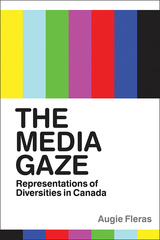As various nations wrestle with issues of immigration, integration, and pluralism, second-generation immigrants are exploring new ways to make sense of who they are and where they belong in the face of competing cultural demands. They may call their adopted countries home, but these young adults know that they stand out from the majority.
This book documents the voice of South Asian youth on the margins and the role of media in their everyday lives. Faiza Hirji focuses on Bollywood cinema – a popular Indian export with strong patriotic and religious themes – as an avenue for the production of cultural, religious, and national identities among these young people, particularly Muslims. Through lively interviews, these young people share their thoughts on how Bollywood shapes and reflects their perceptions of themselves, how they practise their faith and interpret cultural values, and whether they view themselves as hyphenated Canadians.
A unique blend of personal reflection and analysis, Dreaming in Canadian offers a thoughtful response to mainstream media studies on diaspora, nationalism, and multiculturalism. It shows that second-generation immigrants – anchored by the belief that ethnicity and religion can be embraced freely within a pluralist environment – may use media in a variety of ways to assist in the development of their own uniquely hybrid identities.
This book is essential reading for students and scholars interested in diaspora, identity formation, and international media.
In the post-9/11 era, in which Muslims are repeatedly represented as Other to the supposedly civilized Western world, Hirji’s contribution to scholarship is genuinely important and she has produced a book that is highly worth reading.
The beauty of this book lies in its interdisciplinarity. I can easily see it used in media studies but also in diaspora and transnational studies, critical race studies, and journalism. Dreaming in Canadian will be of interest to researchers because of the innovative way it documents the voices of racialized individuals in relationship to media use.
This important book, grounded in personal and scholarly involvement in the community, brings together a number of related fields of study – diaspora studies, popular culture, and youth culture – to shed light on how identity formation works and how it is positioned between national spaces. Much more of this kind of work is needed in the Canadian context.
Introduction: How Canadian Are You? Mapping Nationalism, Media, and Self
1 East Meets West – and Everything Else: Living La Vida Loca in Bollywood
2 Theories of the Wandering Soul: Interpretations of Diaspora
3 Karma Chameleon: Citizenship, Identity, and the New Hybrids
4 But Where Are You Really From? South Asians and Muslims in Canada
5 Little Mosques and Bollywood Epics: Media and Identity Construction
6 “My Heart’s Indian for All That”: Themes of Nationalism and Migration in Bollywood
7 Up Close and Personal: Methodology for Obtaining Audience Opinion
8 “But, I dream in Canadian”: Constructing and Maintaining Plural Identities
9 Bollywood: Films as Meeting Ground
10 Beyond Futility: The Future of Young Canadians of South Asian Origin
Conclusion: You Really Are Global Citizens: Resistance and Reconciliation
Appendix A: Films Cited by Participants
References
Index












